The book Walking with Wolf, introduces Monteverde, Costa Rica, to readers through the experiences of one of the first settlers from the U.S. Wilford Guindon, or Wolf, as he is better known, was part of a group of Quakers who left from Alabama in the early 50’s when, as young men, they were being conscripted into the military during a time of peace. Wolf and three others refused to sign up for the draft and were sentenced to jail.
Since the philosophy of non-violence of the Quakers had put some of them on the wrong side of the law, and because Costa Rica had abolished its military in 1948, a group of several families picked up stakes and immigrated to Central America. When they finally found an area that they decided would be good for dairy farming, they purchased large tracks of land which they named Monteverde and put 554 hectares of land (1,370 acres) aside to protect their watershed. They called this area, Bosque Eterno, or Forever Forest. When scientists started visiting Monteverde in the late 70’s and early 80’s a movement began to save the land surrounding the Forever Forest which had been discovered to be the home of numerous, some relatively rare, species of birds, insects, orchids, frogs, toads and amphibians.
Since the mid-80’s, Monteverde has grown from a sleepy, remote, dairy farming community to one of the top tourist destinations in Costa Rica receiving over 200,000 visitors annually. Its identity, as a unique location, dependent on home-grown eco-tourism and strong community values made it a good candidate to pilot a program that involved motivating many participants to contribute to one central organization which, in turn, supported a variety of locally identified projects and programs. But bringing this vision to reality has been a multi-year challenge and not over yet.
Organization Overview
The idea for Monteverde Community Fund started in 2010 and the organization was official chartered in 2012. It blossomed out of Monteverde residents’ and the Monteverde Institute’s simple idea: Together, we do more good. Today, the Monteverde Community Fund unites diverse resources, shareholders and strategies in order to support and promote sustainable initiatives within the Monteverde region. The Fund has financed projects in economic, social, and environmental sectors and has provided capacity training and support to the local teams behind each project. It also provides fiscal agency to grassroots organizations, so they can focus on their areas of expertise.
When and why did you begin your impact tourism program?
Although charity is understood and highly regarded both among Costa Ricans and the Quakers who immigrated to the area, the word, philanthropy, was somewhat new. At first, many local businesses were skeptical that visitors would donate to local causes and almost no one wanted to make the ask. Monteverde is considered by many to be an expensive destination within Costa Rica, particularly as an ecotourism site, so suggesting that tourists would be willing to pay more out of pocket for local projects seemed like a dream. Our hopes that hotels would institute a $1.00 per day per room request have fallen on deaf ears. But local owners have come up with other ways to contribute, some of which will be discussed later.
What was perhaps the most difficult to starting a destination wide fund in the beginning was that there was no one particular project to support. No one was building a school, or supporting an orphanage, saving a species, or buying up acres of tropical forest like in earlier years. The vision was broader and less tangible. The idea was to support and conserve the destination, it’s people, culture and surroundings in a sustainable and environmentally friendly manner. The projects and programs would be developed and decided on by community members themselves based on their knowledge of the local needs. Visitors were asked to support a community rather than a project. There needed to be a good deal of faith and trust that locals knew what was needed and that the funds would be used wisely.
It was decided to establish three separate funds where travelers and local businesses could contribute; Environmental, Social Cultural, and Smart Economies. The Smart Economies Fund supported pilot projects that promoted best practices of sustainable production or energy use, cooperative efforts, and capacity building. But without specific projects in each area, collecting donations was a harder concept to sell.
Fortunately, the InterAmerican Foundation (IAF), as part of a larger grant, approved some seed money to begin immediately funding projects. It was this grant from the IAF that prompted us to broaden the scope of the original project from just Travelers’ Philanthropy to establishing a Community Foundation with Traveler’s Philanthropy as a key component. It became apparent that it was just as important for local businesses, particularly those that benefitted from tourism, to invest in their own community, as to rely solely on visitors. In 2012, the Monteverde Community Fund was formed.
Using the funds from the IAF designated for projects, as matching, the Community Fund was able to collect other donations from tourists and local businesses and begin a small grants program. Once some specific projects were underway, the Fund could refer to their positive impacts in the Community, and this helped clarify the vision.
Please provide brief examples of some of your most impactful projects.
From the original three designated areas for contributions, other thematic foci were developed in subsequent years, including addressing the impacts and mitigation of climate change, a youth fund and an emergency preparedness/response fund.
In total, the Fund has supported 18 community projects which range in scope from small organic gardens in elementary schools, to solar panels at the Public Library and a women’s soap making initiative. The full project list includes:
- Support for the Recycling Center and 14 Mini collection site buildings.
- Study to protect one of the main water sources for the town of Santa Elena
- Biodigestor for the Santa Elena Public High School
- Rainwater catchment system for the Creative Learning Center School
- Community wide strategic plan for wastewater management
- Publication entitled, Pathways toward Climate Change Resilience for Monteverde
- Solar Electric Panel for Santa Elena Community Library
- Monteverde Community Radio
- Animal spay and neuter campaigns
- Monteverde in Movement, Zumba & Yoga
- Native & Edible Plant Garden—Elementary School in town of Guacimal
- Website development of a platform for small and medium size businesses entitled Explore Monteverde
- Courses on Project Management and Grant Writing.
- Reforestation to Protect Water Sources
- Monteverde Music Festival
- Musical theater workshops for youth.
- Women’s cooperative for making natural soap products
- Strategic plan for developing a stronger and more diversified local economy.
- Community Center improvements for the town of Cabeceras.
- Trainings for local farmers in sustainable agriculture and management and marketing strategies
Has your impact tourism program helped, hurt, or had no impact on tourism to your destination?
There are many advantages of a destination-wide impact tourism model. The Chamber of Tourism in Monteverde uses the terms, Authentic and Sustainable as its destination tag line. Having a destination-wide impact travel model that supports sustainable community projects improves the branding and image of the destination, all while reinforcing the values of the community itself and the local businesses.
Funding Model
To date, how much has been raised? How are funds distributed? Are donations tax deductible?
Since its beginnings, reaching out to just a few tourists in 2011, until 2019, the Small Grants Program has leveraged over $160,000 in direct and in-kind contributions from travelers, tourism businesses and some foundations. All donations given through our affiliates in the U.S. are tax exempt.
Are funds raised from travelers? If so, how?
One of the most consistent ways to fund projects has been through social enterprise and charitable merchandising. Visitors tend to buy souvenirs and memorabilia anyway and when their purchases support a good cause there is an additional incentive, a value added, or what is sometimes referred to as the warm glow effect. The Community Fund has worked with local businesses to develop a series of products that are sold in shops and at hotels throughout the destination. Some examples of these products are shown below:
Consumer Products & Souvenirs
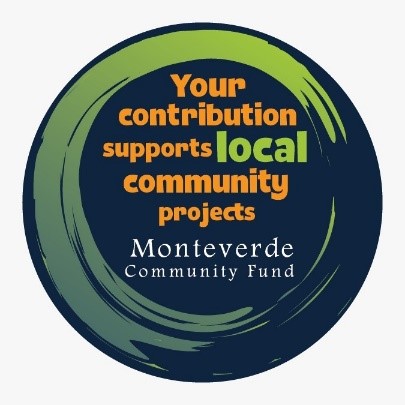
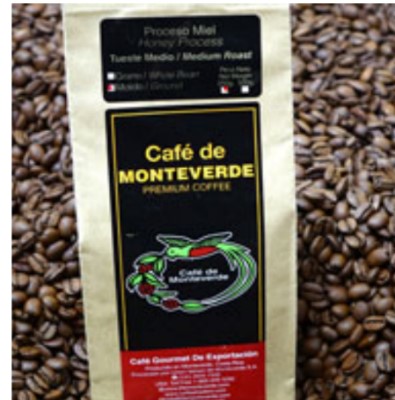
The Green Passport: Includes discounts for products and services from 25 local merchants, as well as tips about being a responsible traveler.
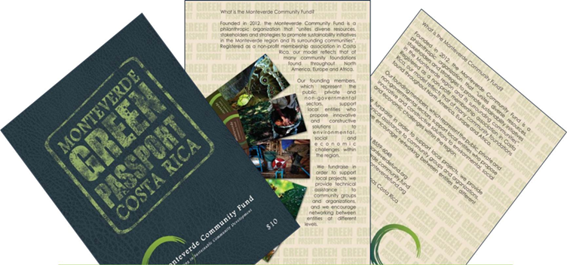
Post Cards: Local photographers and artists donated work that was made into postcards for sale at hotels. They were designed with a tab to collect information about the person buying the cards in the hopes of developing a good mailing list.
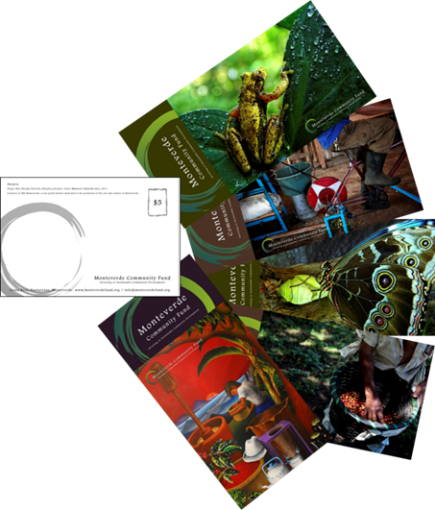
Monteverde Footprints Walking Tour: Because tours are a big draw for tourists visiting the area, the Fund developed a 2-hour walking tour that introduces visitors to the history of community and the work that has been done over the years in conservation including visits to the Children’s Eternal Rainforest, Monteverde Coffee Center, the women’s cooperative and the cheese factory. It has had limited success, but still holds potential if the large Tour Agencies that bring people to the area would recommend or even include the tour in their itineraries.
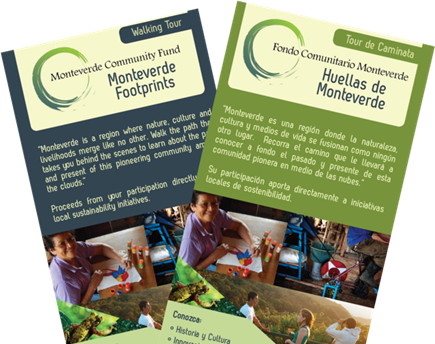
Other items: Envelopes accompanied by displays with information about Travelers’ Philanthropy and the Community Fund are left in rooms of several partnering hotels requesting direct donations. In addition, magnets depicting local animals are sold at Hotels and Souvenir shops.
Each of these methods of connecting with travelers have had varying degrees of success.
Table 1: Opinions on current donation methods used by MCF – WPI Study, 2018
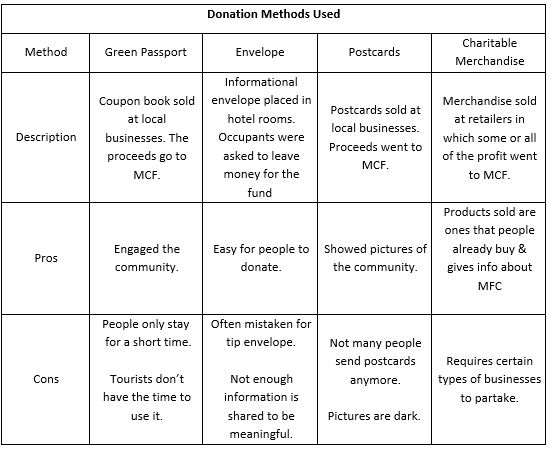
Most recently one of the Fund’s hotel partners suggested yet another way for the hospitality sector to work together to support local sustainable development. One of the top boutique hotels put together a 4-night vacation getaway in collaboration with other businesses. The package includes lodging, tours, transportation and meals. This luxury vacation is raffled off on-line to support the Community Fund and its future projects. Each local business is also reaching out to their own clientele to promote the project which enhances their own image of giving back to the community. This type of collaboration across various sectors of the hospitality industry demonstrates again the power of a destination-wide program.
Visitor Engagement
Do travelers visit the project sites? Why or why not?Do you offer opportunities for voluntourism and/or material donations? Why or why not?
In general, visitors to Monteverde stay an average of 2 nights, many come in groups with preplanned itineraries and little free time. This is one of the challenges we have faced with marketing the walking tour and it is one of the reasons that we do not try to have visitors visit the projects. Also, the projects are located all throughout the district, so providing transportation and logistics would be beyond our capabilities. Nor do we solicit volunteers for the projects as we do not have the staff capacity to supervise them and would feel responsible and might possibly be held responsible for their well-being. We have had volunteers, however, work directly with the Community Fund including student groups from colleges and universities who have conducted needs assessments, outreach, graphic design and publicity. One of the studies from Worcester Polytechnical College students is cited in this case study.
Vetting Process
What is your process for project selection and ongoing support? What is the structure to ensure ongoing accountability?
Projects are evaluated and decided upon by panels of community volunteers who make recommendations to the Board of the Community Fund. To ensure ongoing accountability, those who get approved for a grant receive 50% of project funding upfront. Halfway through the course of the project, they must submit a technical and financial progress report. If the Fund determines that project has progressed accordingly, they will receive the remaining grant funding. The Monteverde Community Fund also conducts staff visits to check on project progress.
Community Partnerships
How do you ensure that your values and approach align with those of the community? Do you engage in ongoing dialogue with the local community? If so, how?
As an organization whose principle role was to gather and distribute financial assets, developing trust, transparency and a complex accounting system were essential.
At first, many people viewed the Traveler’s Philanthropy Program and later the Monteverde Community Fund (MCF) as just one more NGO in a place that already had so many. Monteverde is a community of approximately 6,000 people with some 40 non-profit organizations and many others that have come and gone over the years. Finding the language to explain impact tourism and why the Community Fund was different than other NGO’s in that our goal was to help existing organizations further their work, as well as, assist new initiatives, was a challenge.
Today, the Fund has been able to bring together existing organizations which, by forming networks and working together with seed funding, have begun to tackle the larger, more complex challenges facing the area. Both technical support (talents) and grants (treasure) have been allocated to start a recycling center, to conduct a feasibility study for wastewater treatment, and to raise awareness and change behaviors that negatively impact the global climate crisis.
There are 12 committed business partners, 30 associate members, and almost 1,400 followers on Facebook. Not bad in a community of 6,000 people. Still there are many challenges ahead and a need for better and more effective ways to reach the 200,000 annual visitors. If each tourist gave only $1.00, many of the problems and challenges of the area could be addressed.
Has there ever been a time when adjustments to your approach or project have needed to be made as a result of community feedback? Please explain how you were able to adapt.
In 2018, students from the Worcester Polytechnical College, in Worcester, Mass. spent seven weeks studying and evaluating the Travelers’ Philanthropy Program of the Monteverde Community Fund. The goal of the project was to strengthen MCF’s approach to the Traveler’s Philanthropy model by providing strategies for better collaboration with the tourism industry and greater outreach to community organizations. They recognized that MCF is working to overcome the logistical challenge of connecting a wide variety of businesses, organizations, and visitors, in order to have a widespread impact in Monteverde. The goal of their study was to strengthen MCF’s approach to the Traveler’s Philanthropy model.
The students conducted interviews with 18 tourist businesses to evaluate the visibility of MCF’s programs and to gauge the feasibility of potential partnerships. They investigated the viability of several donation methods, such as opt-out, round up, collection boxes, charitable merchandising, and annual donations. They also surveyed tourists to determine the feasibility of incorporating different donation strategies based on their opinions and reactions. Finally, they conducted interviews with eight other NGO’s and grassroots initiatives.
Some of the key factors the students highlighted for a successful program were the need to emphasize residents’ love for their home, to encourage tourists to care about the places they visit, and to assure local businesses that their future would improve with the sustainable development of the region. But the most important motivating factor for tourism businesses was when their contributions and participation improved or fulfilled the requirements for their Certification for Sustainable Tourism a certification awarded through the Ministry of Tourism, or they felt their involvement would improve their image as a business of sustainable practices.
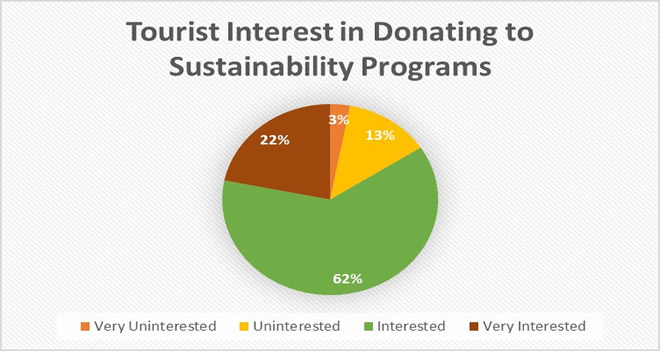
According to the interview data collected by the students, only 20 percent of new business contacted believed that forming a relationship with MCF would directly benefit their business. However, tourist surveys indicated that if a business advertised its affiliation with a program that supports the sustainability of Monteverde, 76 percent of tourists were more inclined to be a patron. And 85 percent of the tourist respondents expressed interest in donating to programs that benefit sustainability and community in Monteverde(1).
Unfortunately, based on our experience and from studies done in other places, current and new partners are more inclined to want to participate in ways that are not the most effective in terms of being able to make a significant impact. Some of the practices explored with businesses included Opt-Out and Round-Up programs, collection boxes, annual donations, and online donations. According to the WPI study, “if a business feels the donation method creates more work, the business will not participate. This was most evident through the Round-Up and Opt-Out programs. These donation methods require extra accounting work and might complicate taxes. The added work made many businesses respond negatively to Opt-Out and Round-Up programs.”(2) The opposite was also true, the easiest way to participate was to simply put out a donation box.
Table 2 shows the preferred donation methods of the businesses interviewed during the study. The checks indicate methods that the businesses thought were feasible for them, and the greyed-out box indicates their donation method of choice.
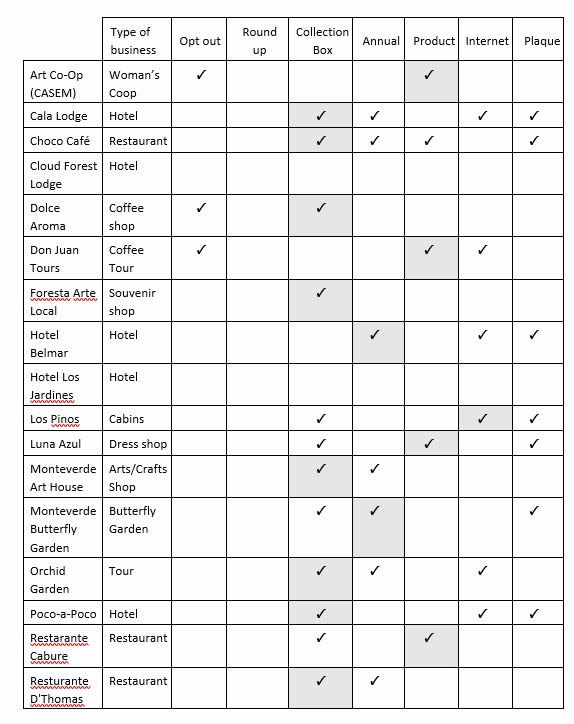
In response to the WPI study we decided that since most of the businesses who preferred having a collection box would be new partners, even though we have never had much success with fund raising this way in the past, it was worth following up for the main purpose of establishing an ongoing relationship. We have also increased the frequency of our newsletters, posts on Facebook and Instagram, as well as adding more local people and businesses to our mailing lists.
Lessons Learned
Why do you feel your destination-wide impact tourism program has been so successful?
When tourists donate to support a community, instead of one specific project, a wide variety of needs can be addressed, and emerging challenges can be met in a timely fashion. Businesses of all sizes and types can participate at levels that are comfortable and viable for them and visitors from all walks to life have opportunities on many levels, in many different ways, to give back to the destination. Eight years ago, when the program began, we weren’t thinking about the urgency and impacts of climate change in the same way we are today. Now, one to the projects supported by the Community Fund and its travel partners is a carbon offset project which encourages all visitors to offset their carbon footprint by donating to a fund which compensates travel produced CO2 through reforestation projects right here in Monteverde.
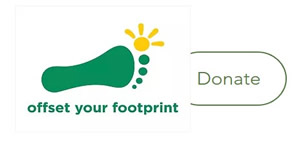
For more information contact: admin@monteverdefund.org
Website: https://www.monteverdefund.org/
Endnotes:
(1) WPI Study, 2018, Monteverde Community Fund: Promoting Sustainability through Travelers’ Philanthropy, pg. 13
(2) WPI Study, 2018, pg.17
This Impact Tourism Handbook was made possible by generous financial support from Elevate Destinations, Hilton, Holbrook Travel, and Overseas Adventure Travel.
